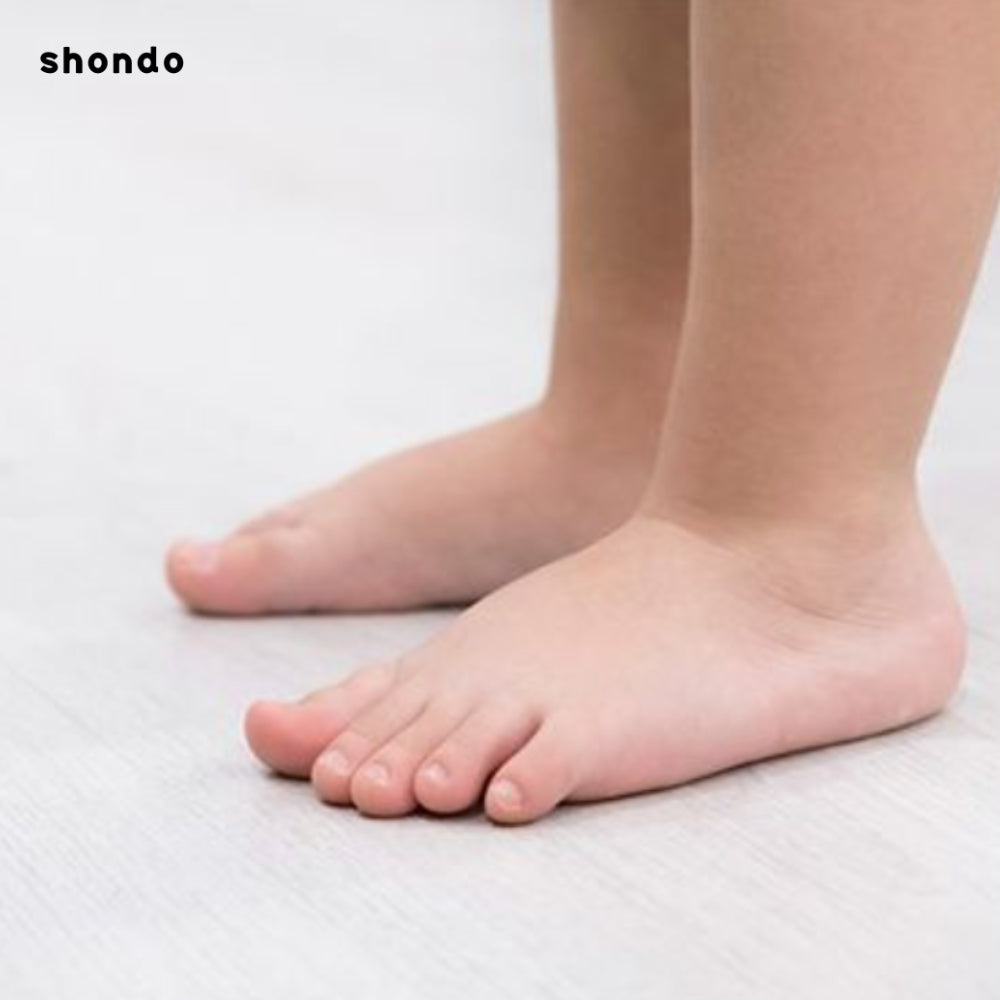Flat feet in children is a common medical condition but is often overlooked because many parents are subjective and think it is normal development. In this article, Shondo tells you the causes as well as signs and how to completely treat this disease.
1. What is flat feet in children?
This is a condition where the arch (the concave part of the sole of the foot) is flat or has less curvature. A normal foot has a distinct arch, when standing the middle part of the sole of the foot does not touch the ground, only the heel, toes and outer edge are in contact with the ground.
Meanwhile, flat feet have the middle part touching the ground, losing the natural curve of the foot. When observed from behind, the heel of a person with a normal foot will be in a straight line with the lower leg.
In contrast, in people with flat feet, the heel tends to tilt outward at an angle to the lower leg. This difference is easily noticeable when the child stands or walks barefoot.
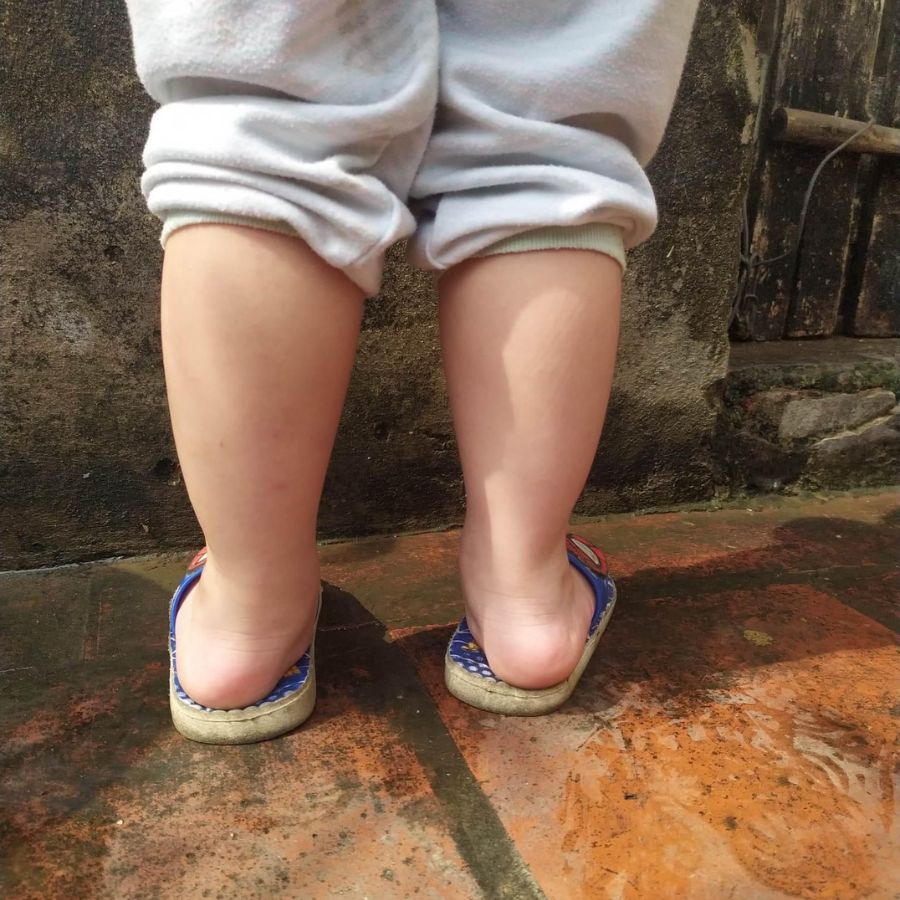
2. How to recognize flat feet in children?
Early detection plays an important role in treating and preventing complications. Parents need to pay attention to the following signs to detect early and take their children to see a doctor promptly. Here are some common signs:
2.1 Observe the foot structure when the child stands
Look for a clear sign if all or most of the sole of the foot touches the ground, with no space in between. Also, look from behind and see if the child's heel is turned outward. The child's ankle may also be rotated inward, making the inner ankle more prominent.
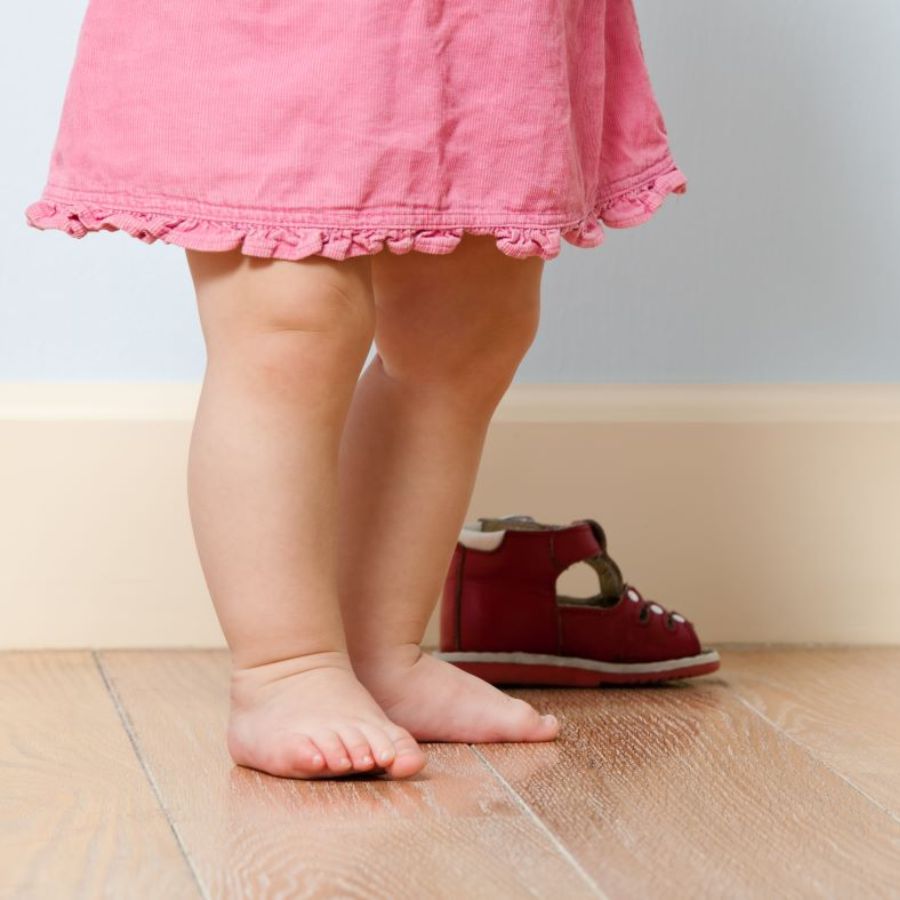
2.2 Signs through children's gait and running style
Children with flat feet often walk awkwardly and lack flexibility. They may walk with their feet turned outward or inward. When running, they are prone to tripping and have unsteady, uneven steps.
In addition, you should pay attention to whether your child complains about foot pain or tired feet after exercise. Because flat feet make the muscles and joints have to work harder, leading to pain.

2.3 Signs of wear on shoes
The most obvious but indirect sign is to look for wear on the soles of your shoes. If they are worn more on the inside, it is likely due to flat feet. When the arch of your foot is not sufficiently curved, more pressure is placed on the inside of your foot when you move, causing the soles to wear unevenly.
Compare the wear and tear with that of your child's peers to see if there are any differences. If the shoes are wearing out faster or unevenly, take your child to the doctor for a check-up.
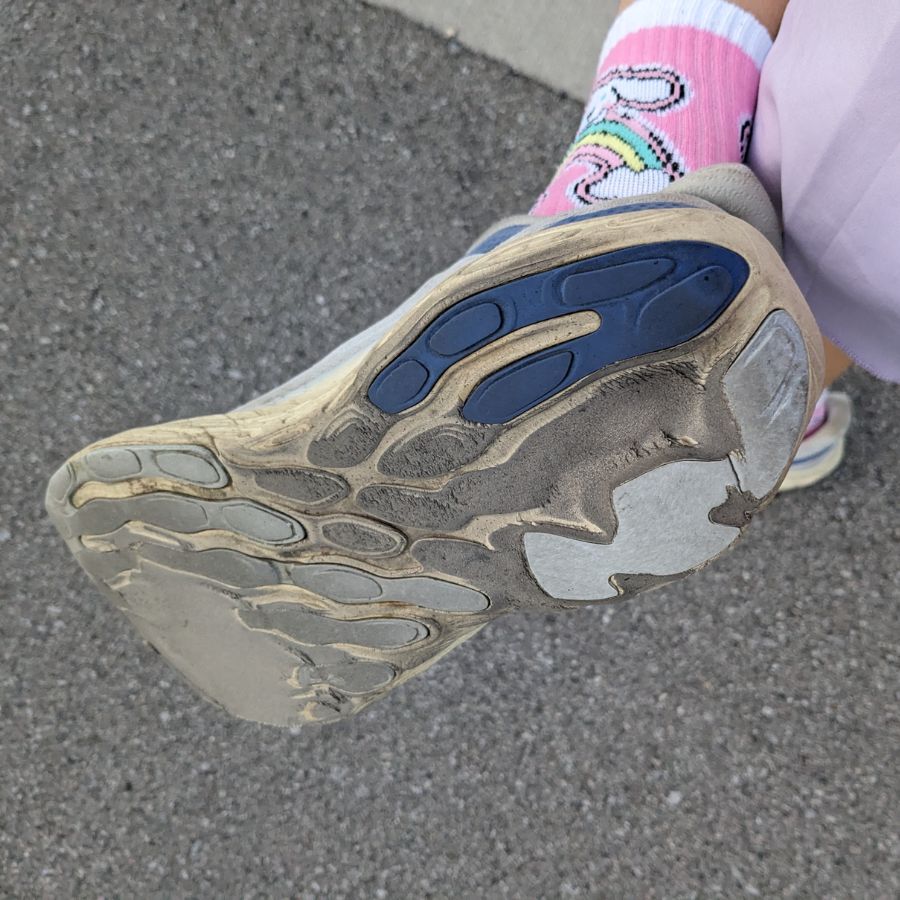
3. Classification of flat feet in children
This is not a uniform condition but comes in many different forms, depending on the cause and severity. Examples include:
- Physiological flat feet: This is the most common type, usually occurring in children under 3 years old. This condition is often caused by a loose ligament system that is not strong enough to support the arch of the foot. However, they will not cause pain and will improve on their own as the child grows.
- Pathological flat feet: Caused by Down syndrome, cerebral palsy or foot injury,... This type can affect the child's mobility and needs to be treated early to prevent complications.
- Rigid flat feet: This is a condition where the arch of the foot collapses completely and cannot be restored, whether standing or sitting. This type is often caused by fusion of the ankle joint, fusion of the ankle bones, or structural bone abnormalities.
- Soft flat feet: This is a condition in which the arch of the foot collapses when standing but returns to normal when sitting or standing on tiptoes. This type is often caused by weak muscles, loose ligaments, or poor walking habits.
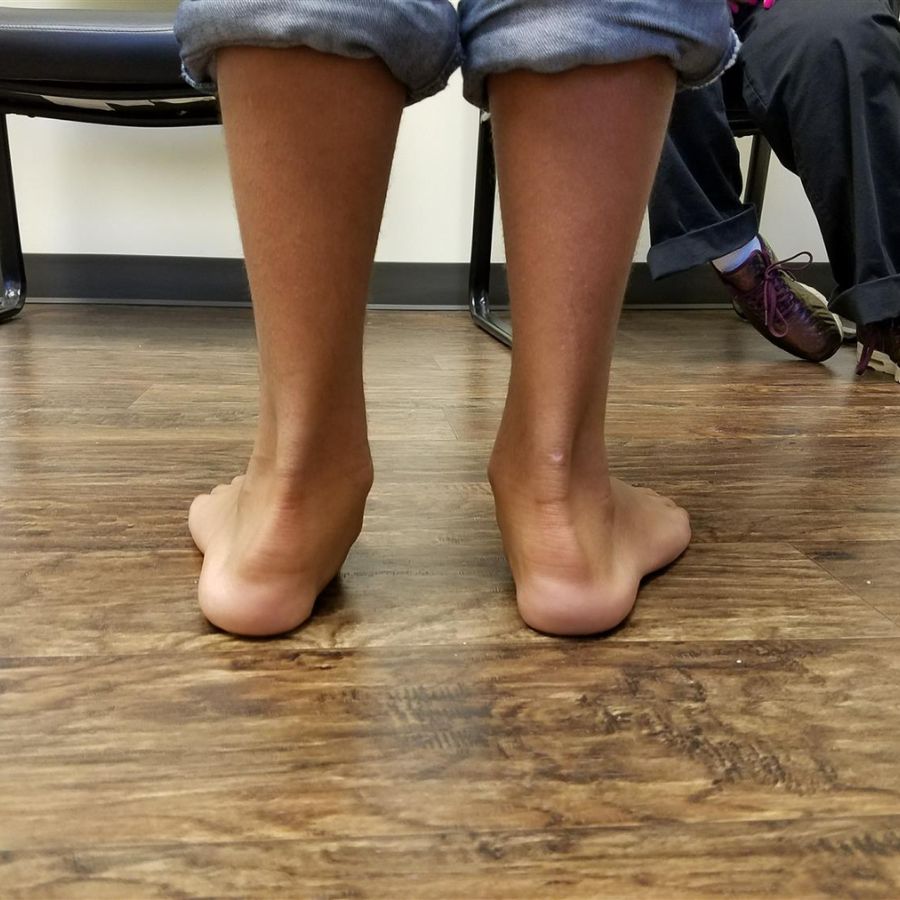
4. What causes flat feet?
There are many causes of flat feet in children , from genetic factors, congenital factors to bad daily habits.
- Genetic and congenital factors: Some children are born with abnormal foot bone structure. Besides, genetics plays an important role, if parents or relatives have flat feet, the child has a high risk of having the same condition.
- Diseases affecting muscles, bones and ligaments: You may not know that cerebral palsy, muscular dystrophy, rheumatoid arthritis, ... are typical examples. These diseases weaken muscles, ligaments, affect bone structure leading to the arch of the foot not forming properly and collapsing.
- Overweight, obesity: Excessive body weight puts pressure on the feet, especially the arches, causing the arches to collapse, leading to flat feet.
- Bad living habits: Habits such as walking barefoot on hard surfaces for long periods of time, wearing unsuitable shoes, standing in the wrong posture... can all contribute to flat feet in children.
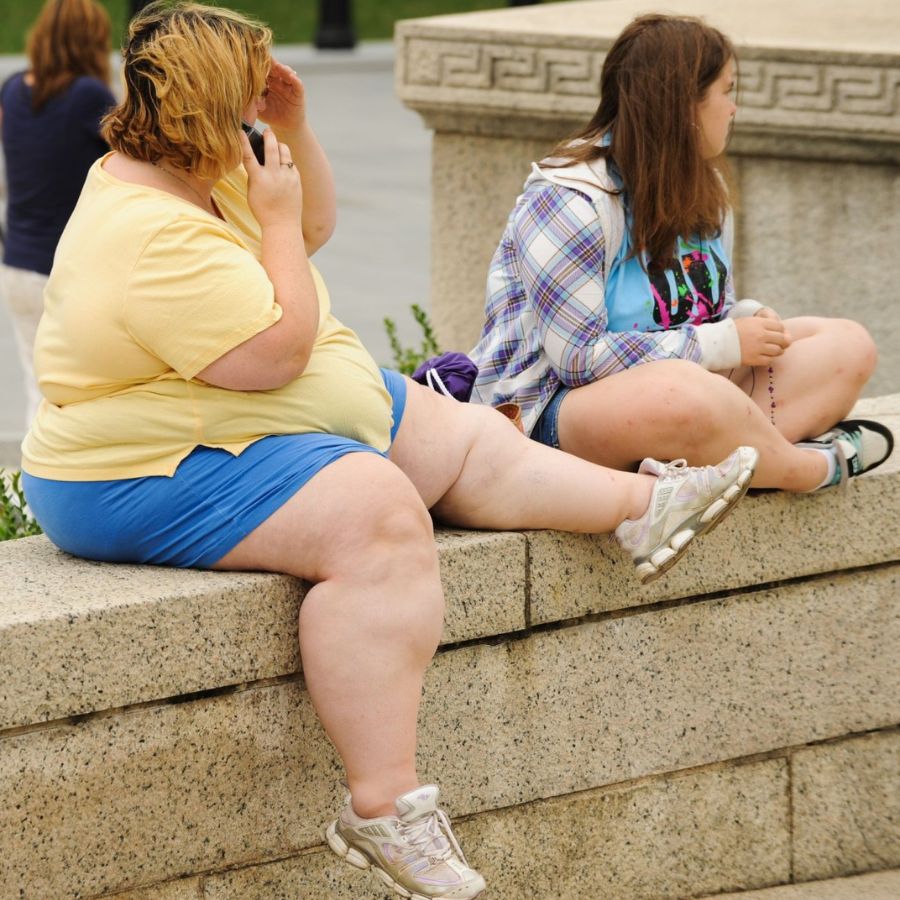
>>>See more: What shoes should flat feet wear ? Instructions for choosing the right shoes.
5. Is flat feet in children really dangerous?
We cannot deny whether flat feet in children are dangerous or not. Because the severity depends on many factors and the time of disease detection. Specifically:
- Impact on mobility: Flat feet reduce the ability to bear weight and balance, making it difficult for children to walk and run. Children will easily stumble, walk unsteadily, and have an abnormal gait.
- Causes pain: This condition, if prolonged, affects the child's sleep, study and psychology. Flat feet also cause other problems such as heel spurs and arthritis, which further increase the feeling of pain and discomfort.
- Bone and joint deformities: If left untreated, flat feet can lead to bone and joint deformities in the feet, ankles, knees, hips, and spine. Common deformities include scoliosis, X-shaped knees, and bow legs.
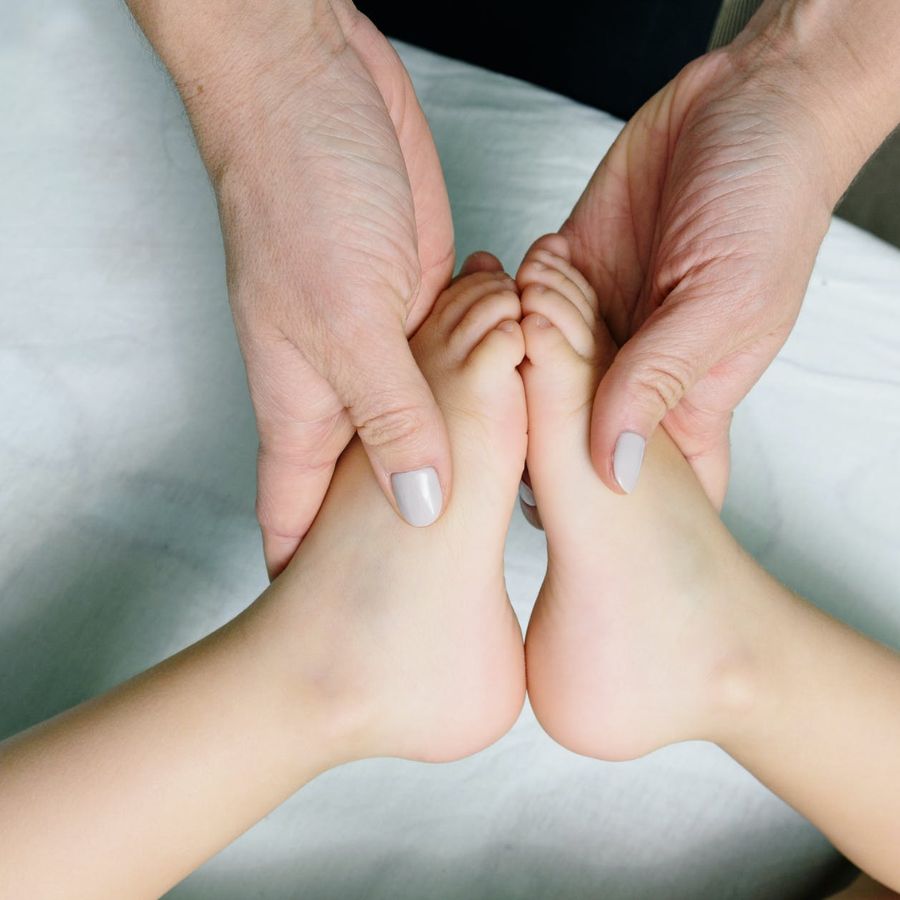
6. When should you take your child to see a doctor for flat feet?
Parents should take their children to the doctor at least once a year from the age of 2 to 6. Especially when children start walking and playing, parents need to pay more attention to their gait to detect any abnormalities.
If you notice that your child is having difficulty standing or walking, such as not being able to maintain balance, it is also time to take them for a check-up. Timely awareness will help prevent serious complications later.
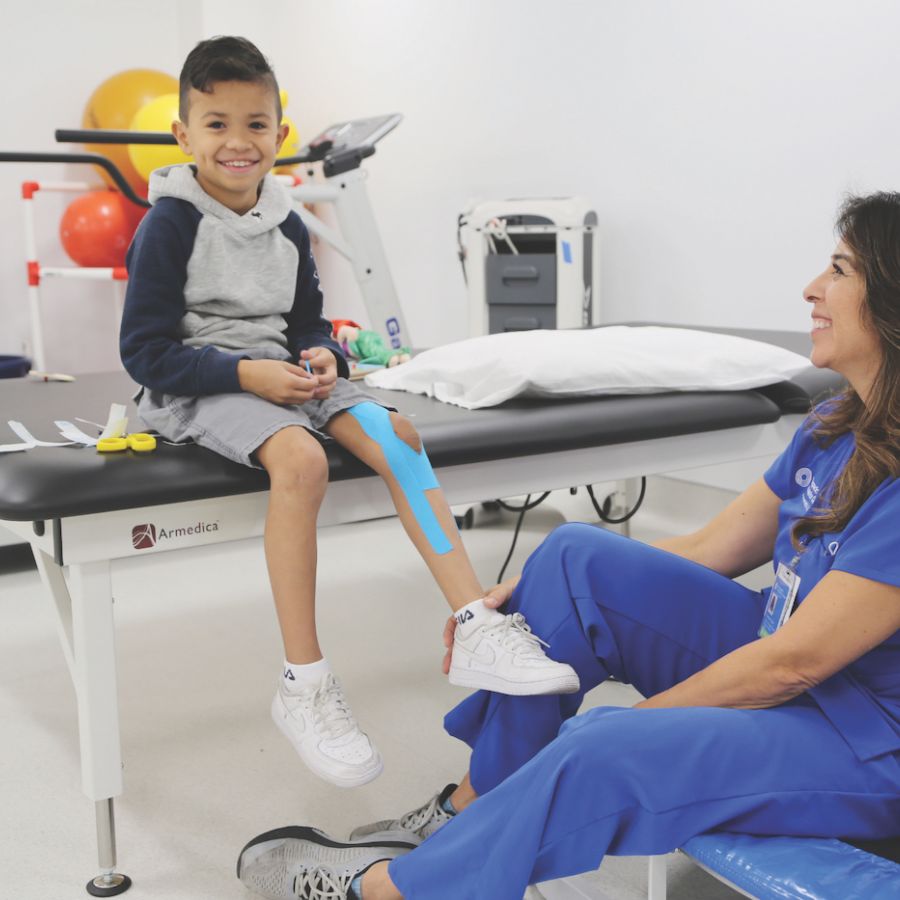
7. What is the current treatment for flat feet in children?
There are different treatment options available to parents, depending on the severity of the condition and its cause.
7.1 Foot surgery
In severe cases, surgery may be required to correct the shape of the foot. However, this is a last resort and should only be considered when other measures have failed.
Recovery from surgery can be lengthy and requires special care. Surgery should be carefully considered, as it can affect a child's long-term development.

7.2 Use foot orthotics
Using orthotics is a popular and safe method to help treat flat feet. Orthotics help improve the distribution of body weight over the foot, support the arch, and reduce pressure on other parts.
Don't worry, experts will design orthotics according to the size and shape of your child's feet, helping to adjust and improve comfort. Note that parents should not arbitrarily buy products outside the market because each child will have a different size.
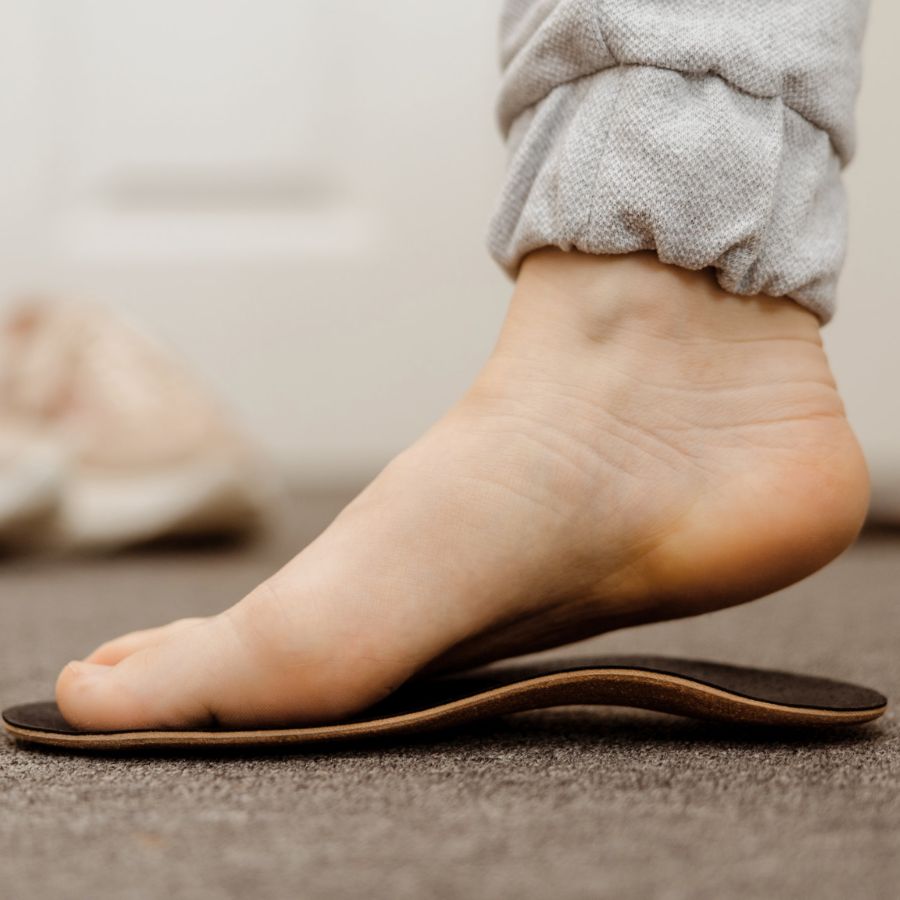
7.3 Physical therapy exercises
This is a useful method to improve function and strengthen muscles. Simple exercises such as standing on one leg, walking on soft ground or stretching the muscles in the foot can significantly improve flat feet in children.
In addition, combining with physical activities such as dancing and playing sports also brings great benefits. In this way, children not only reduce their symptoms but also improve their overall health.
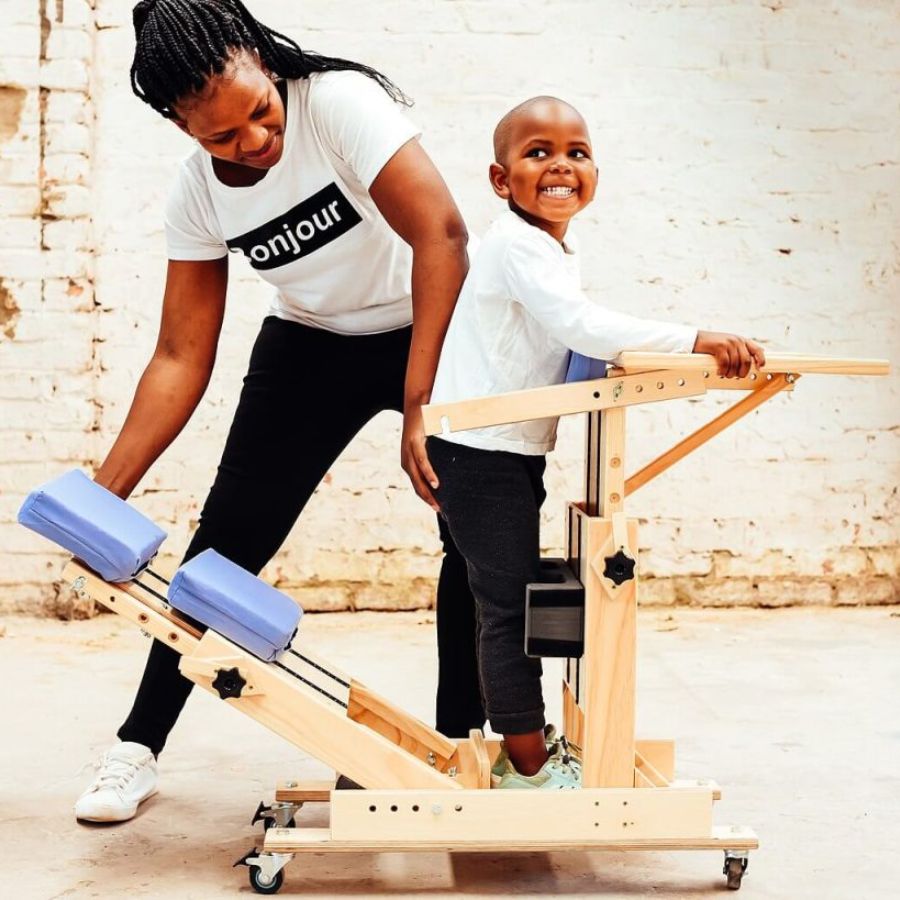
8. What should parents pay attention to when their children have flat feet?
When detected, parents should note some important points to ensure the treatment process goes smoothly and effectively.
- Monitor your child’s condition: Regularly check your child’s shoes to make sure they fit properly and provide good foot support. Shoes that are the wrong size can make the condition worse.
- Encourage your child to participate in physical activities: Suggest that your child participate in outdoor games so that he or she can develop muscle strength and flexibility in the feet. Such activities will help your child develop a healthy body and prevent other health-related problems.
- Consult with a specialist: They will definitely provide you with more specific information and guidance on the most suitable treatment for your child, ensuring that your child receives the best possible care.

9. Where is the best place to treat flat feet in children?
Choosing the right place for treatment is very important. Parents should look for reputable addresses with a team of highly specialized doctors to ensure that their children receive the best care.
- Specialized medical centers: These often have a team of experienced doctors and modern equipment, helping to diagnose and treat diseases effectively. Here, children can receive comprehensive care and a treatment program that best suits their health condition.
- Children's Hospital: Here, specialists will have a lot of experience in the field of care and treatment for children. Parents should talk to the doctor to receive instructions on the most appropriate treatment method for their child's health condition.
- Private clinics: Many clinics today are fully equipped with medical equipment and have a team of highly qualified doctors, helping parents save waiting time. However, before choosing a clinic, parents should read reviews from previous patients to ensure the quality of service and avoid being scammed.

10. Conclusion
Flat feet in children, if not detected and treated promptly, will lead to many serious health problems. As parents, we must know the signs, causes and necessary treatments to protect and take good care of our children's health.
Related Articles

Nếu bạn đã và đang sở hữu cho mình đôi giày ballet sneaker nhưng vẫn chưa biết outfit nào phù hợp. Xem ngay bài viết này với 5 cách phối đồ với giày ballet sneaker đẹp không có điểm trừ cùng Shondo...

Squid Game 3 chính thức khuấy đảo trên màn ảnh, bạn đã sẵn sàng ngồi liền 6 tập để xem cuộc chiến sinh tồn lần cuối của Gi-Hun chưa? Dưới đây là combo cuối tuần “chuẩn sinh tồn hiện đại” mà Shondo ...

Phong cách Retro là gì mà được nhiều người săn đón như vậy? Cùng Shondo tìm hiểu qua bài viết sau đây để biết thêm nhiều điều thú vị từ điểm đặc trưng cho đến cách phối đồ như thế nào là chuẩn nhé....

Một trong những trào lưu nổi bật gây sốt trên các cộng đồng yêu thời trang chính là phong cách Maillard. Nhưng điều gì khiến chúng lại có sức hút lớn đến như vậy? Shondo sẽ giúp bạn hiểu rõ hơn về...

Áo Polo nữ - item nghe thì tưởng già nhưng thực ra lại đang quay trở lại mạnh mẽ. Từ sân golf đến sân trường, từ văn phòng đến quán cafe, chiếc áo đơn giản với cổ bẻ đặc trưng này bỗng trở nên đa n...
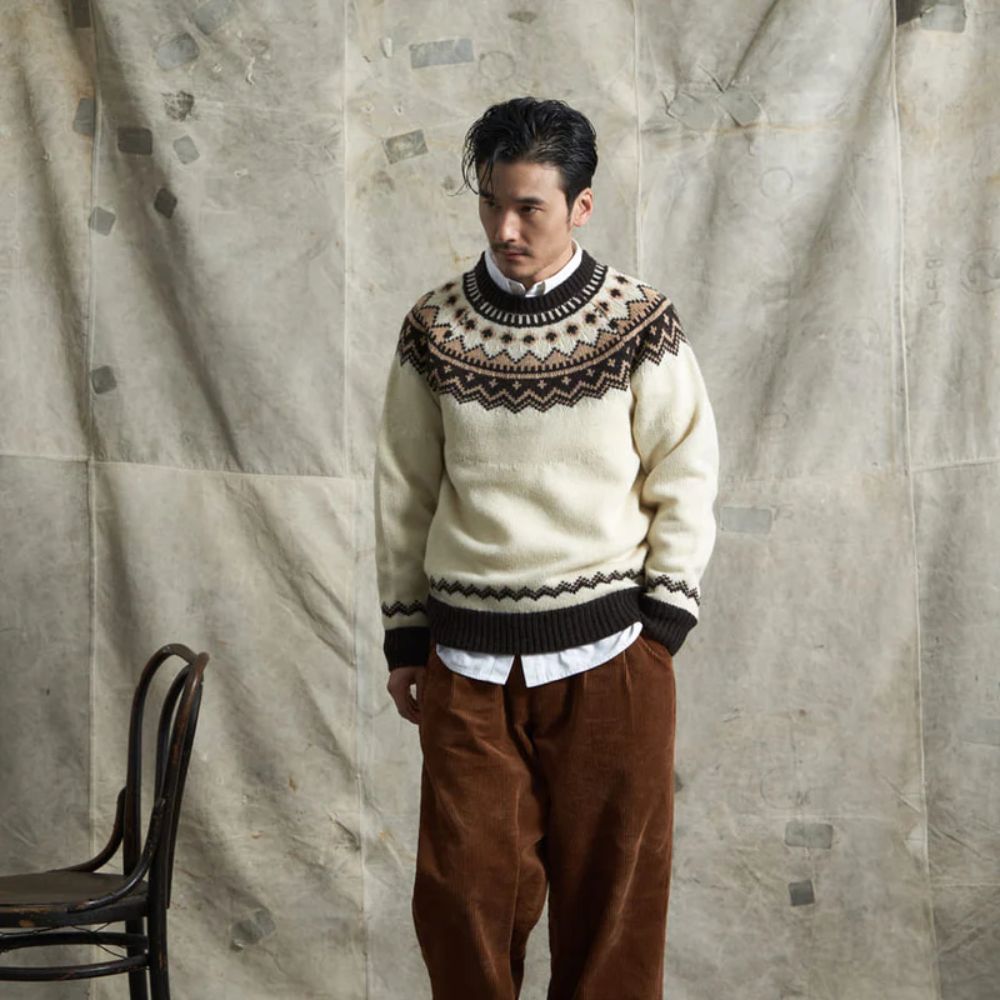
Phối đồ Vintage trong giới thời trang mang đến những nét độc đáo rất riêng. Phong cách này trở thành xu hướng phổ biến không chỉ ở nữ mà còn xuất hiện nhiều ở nam giới. Shondo sẽ cho bạn thấy điều ...

